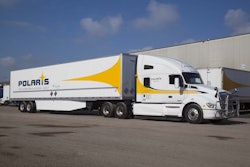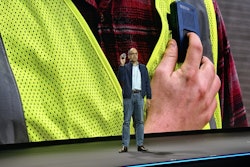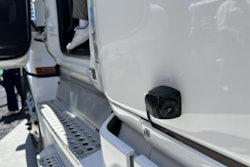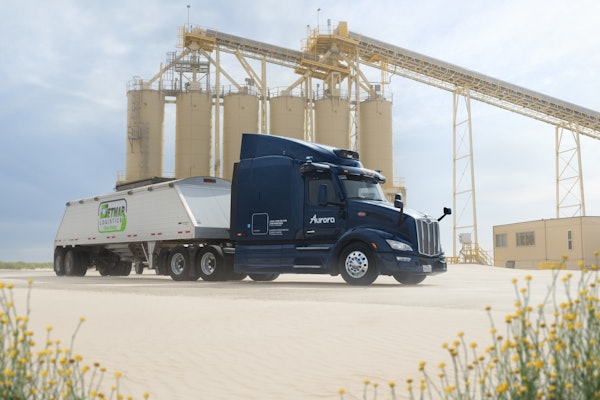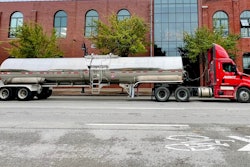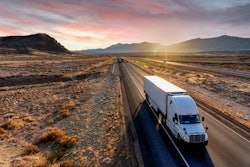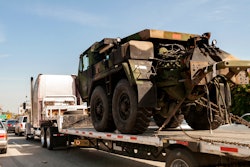Warp is transforming one of its 50 facilities into a fully robotic cross-dock, automating the entire freight lifecycle from inbound to storage and outbound.
The tech-powered middle-mile logistics company is approaching the automation in layers, said Warp Co-founder and CEO Daniel Sokolovsky.
The first layer was the installation of a computer vision system that uses the cameras in the facility to make a map of the warehouse. Also known as a digital twin, the system can recognize and keep track of pallets throughout the freight lifecycle.
“That's been pretty successful so far,” Sokolovsky said. “It has actually helped us cut down the time that it takes for one of the facility staff to find the pallet and figure out exactly which is the right one and what's going on with it and what to do.”
The next layer was robots. Now that the facility has been mapped, instead of telling human staff what to do, the system informs the robotic forklift where to place the pallet for storage, and then later what dock to place it at for outbound pickup.
Sokolovsky said every layer is complete but one.
There is still a person supervising inbound pallets to ensure they are properly labeled and handled and someone supervising the forklifts in case things go awry.
“There are a lot of different things that can go wrong. The easiest one is when the stuff actually arrives and the pallet has some kind of issue. Sometimes you get pallets that are damaged when they arrive, or they're misshapen,” he said. “So those are the pieces that we still need a person involved.”
Shift change
In addition to a nearly fully robotic cross-dock cutting down on costs and labor, Warp is using recent capital to fund the rapid expansion of its AI systems. The company uses AI across routing, pricing, scheduling, visibility and customer service.
The company has said it plans to hire no more than 10 full-time, salaried employees going forward by instead employing AI agents and automation to build a freight infrastructure that runs itself.
And early results are proving to be effective, Sokolovsky said.
Prior to automating the cross-dock, there were two supervisors and a lineup of forklift drivers. Though the company has maintained the two supervisors at the L.A. facility, Sokolovsky said it has been able to reduce the amount of forklift operators.
“It made our labor costs pretty high because good forklift operators in the LA area are not super easy to come by, so we were paying a premium on that labor,” he said. “We've already seen, on any given shift, a more than 30% reduction on the cost, specifically because we're moving out the forklift operators.”
He said this move has also allowed Warp to operate its facility 24/7, saving a day of transportation and improving customer outcomes.
That facility previously ran two shifts: morning and afternoon, opening at 4 a.m. and closing at 6 p.m.
Now, the facility can collect orders later in the day and process them in the middle of the night, enabling outbound shipments during hours that an LTL carrier previously couldn’t operate. It has also benefitted shippers, allowing them a longer timeframe to ship orders and therefore increase revenue.
“It's allowing us to hit our next destination a lot faster than we would have before, and so it shortened our transit time by one day for every region that we're covering out of Los Angeles,” Sokolovsky said, adding that “people can sell more orders on a specific day and have more time to ship them, specifically because our hours of operation have been extended.”




